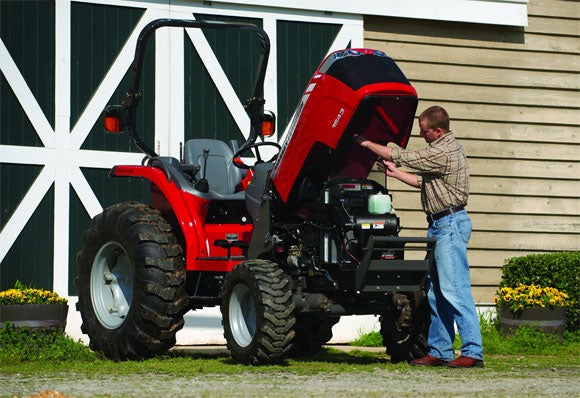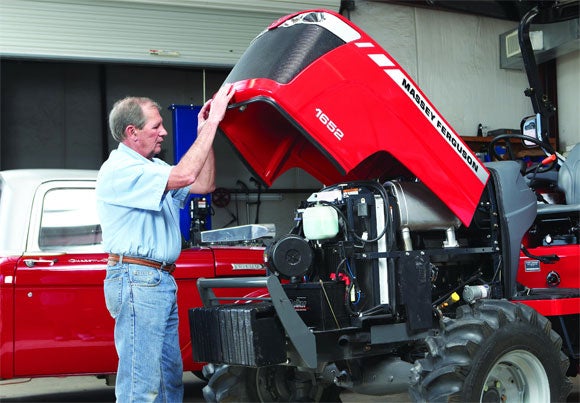
As the fall harvest wraps up, many farmers are turning their attention to next spring, making decisions on fertilizer, crop rotations and seed purchases. AGCO wants to remind farmers not to overlook necessary maintenance on their tractors before winter sets in.
To help farmers remember how to winterize their equipment, AGCO is introducing FARMS. FARMS consists of five steps farmers should take to protect their equipment investment and prepare for next spring.
“We know after this year’s harvest, farmers will be eager to get in the field next spring,” says Keith Dvorak, AGCO product performance manager. “But without taking time this fall to care for their tractors and other implements, farmers are risking a costly delay come spring. FARMS is a simple way to remember the important steps that go into winterizing equipment. It’s one of the easiest and most affordable ways to extend the life of equipment, adding more return on that initial big-ticket investment.”
The five steps of FARMS:
Fill Tanks
Condensation can occur as the weather changes from cool to warm, and can cause water to enter empty tanks, causing costly damage. Top off both the fuel and the hydraulic oil tanks to eliminate condensation. Store diesel exhaust fuel (DEF) in its original container during the winter. Be sure the tank vent is plugged and keep the container away from any heat and direct sunlight.
Adequately Lubricate
One of the most effective ways to protect equipment is to make sure it is lubricated well. Refer to the operator instruction book and lubricate as indicated. Grease unpainted metal parts, such as hydraulic cylinder rods, to protect them from the elements.
Repair Damage
Harvest takes its toll on farmers and equipment alike. Be sure to fix any damage that occurred during the year. This will ensure that broken parts don’t worsen or rust during the winter, and will allow immediate access to the equipment when it is needed next spring or summer.
Maintain and Clean
At the end of harvest, be sure to remove dust and debris from inside and outside of the equipment. Conduct regular maintenance, such as changing the oil and fluids, and checking air pressure in the tires. Protect the air inlet and exhaust from humidity. Lower each linkage fully to avoid pressure buildup in the hydraulic rams, and if possible, slacken the engine accessories’ belt tensioner. Finally, if preferred, remove the battery and store in a dry location.
Store Equipment
Obviously, the best way to protect equipment is under a roof. However, that is not possible for every farmer. Cover the equipment if left outdoors, and protect computerized mechanisms from sun damage by covering with a cloth. For extra protection, use water-resistant products such as wax to help keep equipment from rusting and causing premature wear.
Hay equipment requires some additional steps to effectively winterize it, but the additional steps will help maintain the value of the equipment. Further, when the time comes to cut and bale hay, the window of time may be quite narrow. Having equipment that is ready to go immediately into the field without repair helps hay farmers be more efficient with their time. To winterize hay equipment, AGCO recommends draining any preservatives housed in the baler; remove tension on round balers’ forming belts and remove the fire extinguisher (water variety) from square balers and store properly.
“At AGCO, we believe in helping farmers protect their investment in equipment, regardless of brand,” says Dvorak. “Farmers work hard all year-round, and they need equipment that will help them complete their daily tasks. By taking just a small amount of time this winter to make sure tractors and hay equipment are properly stored, farmers can rely on them for many growing seasons to come.”

 Your Privacy Choices
Your Privacy Choices